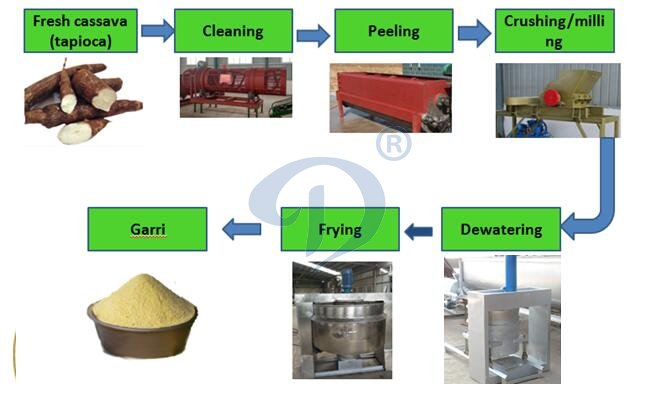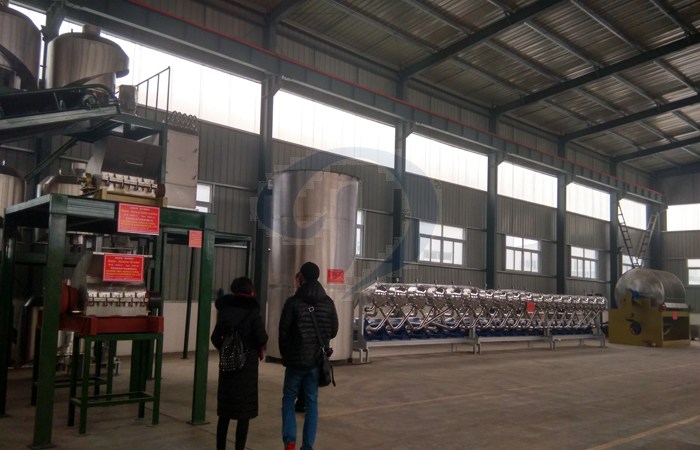 |
| Garri treating process |
Cassava is a tuber crop native to South America.However, Nigeria is the world's leading producer. It contains very high level of starch, and is processed in many ways to get an edible end-product.
Cassava roots can be processed into several different products, which include garri, flour and starch. Garri is a creamy-white, granular flour with a slightly fermented flavor and a slightly sour taste made from fermented, gelatinized fresh cassava tubers. Garri is widely known in Nigeria and other West African countries.
How to treat cassava into garri ?
Processing garri from cassava tubers steps as below :
1. Cassava peeling of garri treating process
Peel off the back of the cassava tubers. Try as much as possible not to peel too deep. Peeling cassava can be made by hand work or by machine
2. Cassava washing of garri treating process
Wash the peeled tubers. Use a lot of water because this is the only washing you are going to do.
3. Cassava grating of garri treating process
Use the cassava grating machine to grate the peeled and washed cassava into cassava mash .
 |
| Grating cassava for garri treating process |
4. Fermentation of garri treating process
After the grating process , the cassava mash need to be packed in bags and for fermentation 2-3 days.
5. Press de-watering of garri treating process
Press excess water out of cassava mash by hydraulic press machine or by traditional method for de-watering cassava mash.
6. Cake breaking and Sieving of garri treating process
Using a wide sieve, sieving the wet cake into small pieces – known as grits and remove any fibrous material.
7. Garri frying process of garri treating process
Then, using a wide frying pan, fry the powder in reasonable portions until it becomes dry and crispy product . Frying garri can be made by hand work or by machine .
8. Packing of garri treating process
Pack your garri in a dry place, and start enjoying your meal.
More Information about our garri treating machinery , please contact
Phone: +86 371 56771822
Email : sales@doingmachinery.com
Website: www.cassavaprocessingplant.com
